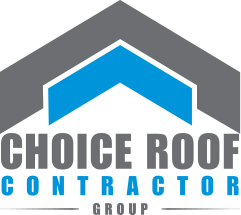
Commercial building owners know that roof maintenance is critical to asset preservation. Among the options available, roof coatings have become an increasingly popular choice to extend the life of commercial roofing systems without the cost or disruption of a full tear-off.
But despite their benefits, roof coatings are often misunderstood, oversold without context, or misapplied in ways that cause early failure.
This guide will cut through the noise. Below, you’ll learn the truth about common roof coating myths, see a clear comparison of key commercial-grade coating materials, and discover much more along the way.
Busting Myths: What Roof Coatings Really Do
Roof Coatings Are Just Fancy Paint

When applied as part of a true system, they add a protective membrane over the existing roof that helps manage thermal movement, prevents water infiltration, and reflects sunlight.
Any Coating Will Work on Any Commercial Roof
Not all coatings are created equal. For example, a silicone coating that excels on a flat TPO roof in a humid climate might perform poorly on a metal roof with heavy foot traffic.
Commercial roofs vary widely. Just a few of the popular systems include EPDM, modified bitumen, metal and TPO. Each substrate has unique requirements. Using the wrong coating can mean poor adhesion, cracking, or complete failure of the system within a couple years.
Coatings Eliminate the Need for Maintenance
Coatings significantly extend the life of commercial roofs, but they’re not “set-it-and-forget-it” solutions. They require inspections and periodic touch-ups to ensure long-term performance.
Factors like foot traffic, weather events, and standing water can all accelerate wear. Properly maintained, a commercial roof coating can add 10–20+ years of life, but ignoring it can mean re-coating far sooner.
All Coatings Reflect Heat Equally
While many coatings boast reflective properties, the actual thermal performance can vary significantly. Silicone and acrylic coatings, for instance, have high reflectivity, but dirt accumulation and degradation can reduce effectiveness over time. Also, some manufacturers add metallic flakes to boost reflectivity.
Coatings Can Be Installed in Most Weather Conditions
Some building owners assume coatings can be applied even late autumn or early winter if the sun is at least shing. However, temperature, humidity, and rain all influence curing and adhesion. Application during unsuitable weather can lead to poor bonding or blistering, undermining the investment.
Best Material Match-Up for Commercial Roof Coatings
Need a Local Expert?
Our group works together to provide:
- Larger Base of Knowledge
- Group-Wide Accountability
- Set Standards for Service
- More Peace of Mind
Acrylic Roof Coatings
Best For: Commercial roofs in mild, dry, or moderately wet climates with good drainage.
Advantages:
- Cost-effective option for large square footage
- Highly reflective for improved energy efficiency
- Easy to apply and recoat
Limitations:
- Poor resistance to long-term ponding water
- Can chalk or erode faster under heavy UV exposure without maintenance
Acrylic is often the go-to choice for large warehouses and retail centers looking for affordable reflectivity and aesthetic improvement (as long as ponding water isn’t an issue).
Silicone Roof Coatings
Best For: Flat commercial roofs in rainy, humid, or coastal regions.
Advantages:
- Excellent resistance to ponding water
- Superior UV stability and reflectivity
- Remains flexible in temperature extremes
Limitations:
- Can attract dirt, slightly lowering reflectivity over time
- Difficult to recoat without special primers
Silicone is popular for flat commercial roofs with drainage challenges, such as shopping centers or office complexes in rainy climates.
Polyurethane Roof Coatings
Best For: Commercial roofs that see heavy foot traffic or physical abuse.
Advantages:
- Outstanding abrasion and impact resistance
- Good waterproofing capability
- Handles thermal movement well
Limitations:
- Typically more expensive
- Strong odors during application
Polyurethane coatings are ideal for commercial facilities where durability under foot traffic is a key concern. Examples include hospitals, schools, and industrial plants with frequent maintenance needs.
Real-World Challenges in Commercial Roof Coating Projects

Substrate Condition is Critical
A roof in poor condition can’t simply be “sealed over.” Wet insulation, a myriad of blisters, rusted out metal roof panels, and deep cracks are showstoppers. Coatings require a sound, prepared surface. Ignoring underlying damage guarantees early failure, risking leaks and warranty issues.
Weather and Application Timing
Commercial jobs can be huge and as a result a mistimed application can be very costly. Temperature and humidity affect curing, while unexpected rain can completely ruin fresh applications. Professional contractors know how to plan around weather to ensure reliable results.
Surface Prep is Non-Negotiable
Most coating failures stem from poor preparation. Commercial projects need thorough cleaning, repairs, priming, and proper detail work around penetrations. Cutting corners on prep is a recipe for failure.
Warranty Requirements
Manufacturers often offer robust warranties on commercial coatings, but only if application guidelines are met. Many require approved contractors, documented inspections, and strict adherence to product specs. It’s important to understand warranty requirements upfront.
Why Roof Coatings Make Sense for Most Commercial Building Owners

For businesses looking to enhance sustainability efforts, roof coatings also contribute to lower energy consumption and can help meet environmental goals – all while extending the life of existing roofing systems.
Final Thoughts!
A properly installed roof coating system is a powerful tool for property managers, facility owners, and investors looking to extend roof life, reduce energy costs, and avoid expensive tear-offs. But success depends on choosing the right material, preparing the surface properly, reinforcing vulnerable areas like seams and protrusions, and maintaining the system over time.
If you’re considering a coating for your commercial property, get informed, ask questions, and partner with a roofing professional who understands these realities.


